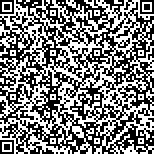| 引用本文: | 郝俊,马旭洲,王武,王高龙,王友成,郎月林,李星星.河蟹生态养殖池浮游植物功能类群的结构特征.湖泊科学,2016,28(5):1047-1056. DOI:10.18307/2016.0515 |
| HAO Jun,MA Xuzhou,WANG Wu,WANG Gaolong,WANG Youcheng,LANG Yuelin,LI Xingxing.Structure of phytoplankton functional groups in the ecological farming crab ponds. J. Lake Sci.2016,28(5):1047-1056. DOI:10.18307/2016.0515 |
|
| |
|
|
| 本文已被:浏览 8019次 下载 5652次 |

码上扫一扫! |
|
|
| 河蟹生态养殖池浮游植物功能类群的结构特征 |
|
郝俊1,2,3,4, 马旭洲1,2,3, 王武1,2,3, 王高龙1,2,3, 王友成5, 郎月林5, 李星星6
|
|
1.上海海洋大学农业部淡水水产种质资源重点实验室, 上海 201306;2.上海市水产养殖工程技术研究中心, 上海 201306;3.水产动物遗传育种中心上海市协同创新中心, 上海 201306;4.天津市水产技术推广站, 天津 300221;5.上海鱼跃水产专业合作社, 上海 201611;6.遵义市水产站, 遵义 563000
|
|
| 摘要: |
| 为探究河蟹生态养殖池浮游植物群落的结构及动态,2013年4-10月对上海松江泖港地区河蟹养殖池的浮游植物进行了调查,分析其种类构成、密度、生物量和生物多样性.共检测到浮游植物105种,其中河蟹生态养殖池优势种11种,分别属于B、D、J、LO、X1、WO、X2、S1和MP功能群.河蟹养殖池浮游植物平均密度为282.58×104 cells/L,平均生物量为1.59 mg/L,Shannon-Wiener多样性指数变化范围为2.11~3.09.水源浮游植物平均密度为175.13×104 cells/L,平均生物量为0.99 mg/L,Shannon-Wiener多样性指数变化范围为1.70~2.79.河蟹养殖池浮游植物平均密度分别于5月14日6月14日和7月29日8月29日与水源差异显著;河蟹养殖池浮游植物平均生物量分别于5月30日、6月14日和7月29日8月29日与水源差异显著;河蟹养殖池浮游植物Shannon-Wiener生物多样性指数分别于5月14日6月14日和8月14日9月15日与水源差异显著.河蟹养殖池浮游植物的平均密度、平均生物量和生物多样性指数与水源水体变化趋势基本一致,均高于水源,群落稳定. |
| 关键词: 河蟹 浮游植物 密度 生物量 功能类群 生物多样性指数 |
| DOI:10.18307/2016.0515 |
| 分类号: |
| 基金项目:上海市中华绒螯蟹产业技术体系项目(D8003-10-0208)、国家星火计划项目(2011GA680001)、欧盟FP7亚欧水产平台项目(245020)和水产动物遗传育种中心上海市协同创新中心项目(ZF1206)联合资助. |
|
| Structure of phytoplankton functional groups in the ecological farming crab ponds |
|
HAO Jun1,2,3,4, MA Xuzhou1,2,3, WANG Wu1,2,3, WANG Gaolong1,2,3, WANG Youcheng5, LANG Yuelin5, LI Xingxing6
|
|
1.Key Laboratory of Freshwater Fishery Germplasm Resources, Ministry of Agriculture, Shanghai Ocean University, Shanghai 201306, P. R. China;2.Shanghai Engineering Research Center of Aquaculture, Shanghai 201306, P. R. China;3.Shanghai Collaborative Innovation Center for Aquatic Animal Genetics and Breeding, Shanghai 201306, P. R. China;4.Tianjin Fisheries Technical Extension Station, Tianjin 300221, P. R. China;5.Shanghai Yuyue Aquaculture Cooperative, Shanghai 201611, P. R. China;6.Zunyi Fisheries Technical Extension Station, Zunyi 563000, P. R. China
|
| Abstract: |
| In order to explore the influence of phytoplankton community structure in the ecological farming crab pond, we collected phytoplankton from the crab ponds and the source of water from April to October 2013in Maogang Town, Songjiang District, Shanghai. The phytoplankton species composition, density, biomass and biodiversity were analyzed. 11 dominant species of all 105 phytoplankton species were detected, finding that the B, D, J, LO, X1, WO, X2, S1, MP were the common species in the ecological farming crab ponds. Average density of the biological pond phytoplankton was 282.58×104 cells/L, the average biomass was 1.59 mg/L, and the range of Shannon-Wiener diversity index was 2.11 to 3.09. Average density of the phytoplankton biomass from the water source samples was 175.13×104 cells/L, the average biomass was 0.99 mg/L, and the range of Shannon-Wiener diversity index changed from 1.70 to 2.79. Average density of phytoplankton in crab pool was significantly higher than that in the river water during two periods from May 14 to June 14 and from July 29 to Aug. 29. The average crab pool phytoplankton biomass was significantly higher than that in the source of water at days of May 30, June 14, and from July 29 to Aug. 29. Phytoplankton Shannon-Wiener diversity was significantly higher than that in the source of water in periods from May 14 to June 14 and from Aug. 14 to Sept.15. In summary, the crab pond phytoplankton species, density, biomass and biodiversity with much stable community were higher than those in the source of water. |
| Key words: Crab phytoplankton density biomass functional groups biodiversity index |
|
|
附件
|
|